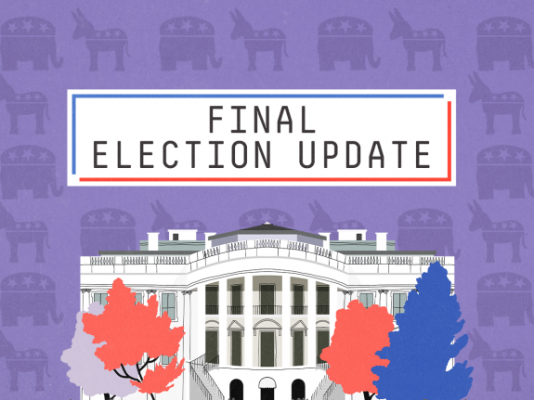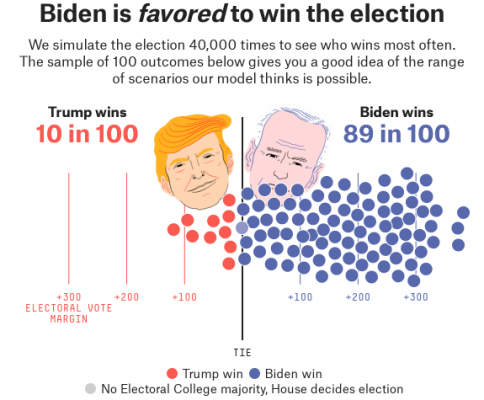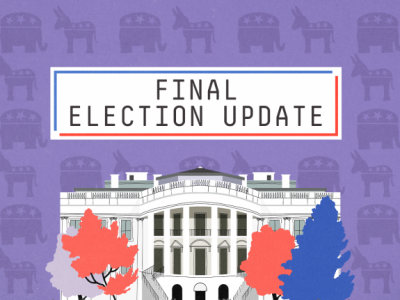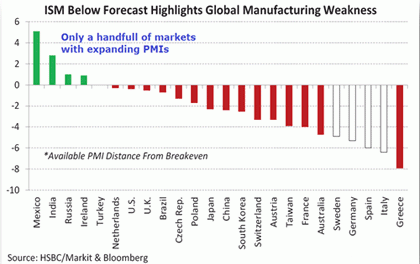 By Nate Silver – In FiveThirtyEight
By Nate Silver – In FiveThirtyEight
Nov 03, 2020, 1:08 a.m. – FiveThirtyEight has issued its final presidential forecast. There hasn’t been a lot of change over the past 24 or 48 hours, as most of the late polling either came in close to our previous polling averages, or came from — frankly — fairly random pollsters that don’t get a lot of weight in our forecast.
Of course, you can click over to the forecast right now if you’d like to see what it says — I’m sure most of you have already done that.
But in these accompanying write-ups, I like to provide some context. When I wrote about our final presidential forecast in 2012, for example, I was trying to explain why a race that everyone assumed was close actually reflected a fairly decisive advantage for Barack Obama.
When I wrote about our final forecast in 2016, conversely, it was pretty much the opposite. I was trying to explain that, although Hillary Clinton was favored, what most of the media was portraying as a sure thing was a highly competitive contest between her and Donald Trump.
This year … I’m not really sure what I’m trying to convince you of. If you think that polling is irrevocably broken because of 2016 — well, that’s not really correct.
On the other hand, if it weren’t for 2016, people might look at Joe Biden’s large lead in national polls — the largest of any candidate on the eve of the election since Bill Clinton in 1996 — and conclude that Trump was certain to be a one-term president.
If you do think that, please read my story from earlier this week about how Trump can win and why a 10 percent chance needs to be taken seriously.
Nonetheless, Biden’s standing is considerably stronger than Clinton’s at the end of the 2016 race. His lead is larger than Clinton’s in every battleground state, and more than double her lead nationally. Our model forecasts Biden to win the popular vote by 8 percentage points,1 more than twice Clinton’s projected margin at the end of 2016.
Indeed, some of the dynamics that allowed Trump to prevail in 2016 wouldn’t seem to exist this year. There are considerably fewer undecided voters in this race — just 4.8 percent of voters say they’re undecided or plan to vote for third-party candidates, as compared to 12.5 percent at the end of 2016. And the polls have been considerably more stable this year than they were four years ago.
Finally, unlike the “Comey letter” in the closing days of the campaign four years ago — when then-FBI Director James Comey told Congress that new evidence had turned up pertinent to the investigation into the private email server that Clinton used as secretary of state — there’s been no major development in the final 10 days to further shake up the race.
Now, there are also some sources of error that weren’t as relevant four years ago. The big surge in early and mail voting — around 100 million people have already voted! — could present challenges to pollsters, for instance.
Still, even making what we think are fairly conservative assumptions, our final forecast has Biden with an 89 percent chance of winning the Electoral College, as compared to a 10 percent chance for Trump. (The remaining 1 percent reflects rounding error, plus the chance of an Electoral College tie.)
This year … I’m not really sure what I’m trying to convince you of. If you think that polling is irrevocably broken because of 2016 — well, that’s not really correct. On the other hand, if it weren’t for 2016, people might look at Joe Biden’s large lead in national polls — the largest of any candidate on the eve of the election since Bill Clinton in 1996 — and conclude that Trump was certain to be a one-term president. If you do think that, please read my story from earlier this week about how Trump can win and why a 10 percent chance needs to be taken seriously.
Nonetheless, Biden’s standing is considerably stronger than Clinton’s at the end of the 2016 race. His lead is larger than Clinton’s in every battleground state, and more than double her lead nationally. Our model forecasts Biden to win the popular vote by 8 percentage points,1 more than twice Clinton’s projected margin at the end of 2016.
Indeed, some of the dynamics that allowed Trump to prevail in 2016 wouldn’t seem to exist this year. There are considerably fewer undecided voters in this race — just 4.8 percent of voters say they’re undecided or plan to vote for third-party candidates, as compared to 12.5 percent at the end of 2016. And the polls have been considerably more stable this year than they were four years ago.
Finally, unlike the “Comey letter” in the closing days of the campaign four years ago — when then-FBI Director James Comey told Congress that new evidence had turned up pertinent to the investigation into the private email server that Clinton used as secretary of state — there’s been no major development in the final 10 days to further shake up the race.
Now, there are also some sources of error that weren’t as relevant four years ago. The big surge in early and mail voting — around 100 million people have already voted! — could present challenges to pollsters, for instance.
Still, even making what we think are fairly conservative assumptions, our final forecast has Biden with an 89 percent chance of winning the Electoral College, as compared to a 10 percent chance for Trump. (The remaining 1 percent reflects rounding error, plus the chance of an Electoral College tie.)
But what’s tricky about this race is that — because of Trump’s Electoral College advantage, which he largely carries over from 2016 — it wouldn’t take that big of a polling error in Trump’s favor to make the election interesting. Importantly, interesting isn’t the same thing as a likely Trump win.
Instead, the probable result of a 2016-style polling error would be a Biden victory but one that took some time to resolve and which could imperil Democrats’ chances of taking over the Senate.
On the flip side, it wouldn’t take much of a polling error in Biden’s favor to turn 2020 into a historic landslide against Trump.
So as we did four years ago, let’s run through a few stress checks here. On average in past elections, the final polls have been off by around 3 percentage points. How would the map change if there were a 3-point error in Trump’s direction?
And what about a 3-point error in Biden’s direction? Keeping in mind that some states move more than others in accordance with national trends, here’s what our final forecast shows:
| WITH 3-POINT NNATIONAL ERROR … | |||
| FINAL 538 FORECAST | IN BIDEN’S FAVOR | IN TRUMP’S FAVOR | |
| New Hampshire | +10.6 | +14.5 | +6.7 |
| Minnesota | +9.1 | +12.1 | +6.0 |
| Wisconsin | +8.3 | +11.6 | +5.1 |
| Michigan | +8.0 | +11.2 | +4.9 |
| Nevada | +6.1 | +9.5 | +2.8 |
| Pennsylvania | +4.7 | +7.7 | +1.7 |
| NE-2 | +3.2 | +6.4 | -0.0 |
| Arizona | +2.6 | +5.8 | -0.7 |
| Florida | +2.5 | +5.7 | -0.7 |
| North Carolina | +1.8 | +4.7 | -1.1 |
| ME-2 | +1.6 | +4.8 | -1.6 |
| Georgia | +1.0 | +3.6 | -1.6 |
| Ohio | -0.6 | +2.5 | -3.7 |
| Iowa | -1.5 | +2.0 | -5.0 |
| Texas | -1.5 | +1.7 | -4.7 |
| Montana | -6.4 | -3.3 | -9.5 |
| South Carolina | -7.5 | -4.8 | -10.2 |
| Alaska | -8.5 | -5.3 | -11.7 |
| Missouri | -9.4 | -6.3 | -12.5 |
First, before we get to the Biden-friendly or Trump-friendly scenarios: Suppose this is one of those happy years when there isn’t any systematic error in the polls — that is, Biden wins by about 8 points nationally. In that case, then Biden’s going to win the Electoral College, even if there might be polling misses in individual states. Biden’s easiest path to victory would be to win back three of the so-called “Blue Wall” states that Hillary Clinton lost: Michigan, Wisconsin and Pennsylvania.
Coupled with the states that Clinton won in 2016, that would get Biden up to 278 electoral votes, more than the 270 required. Pennsylvania is the most tenuous of the “Blue Wall” group, but even if Biden lost it — unlikely if polls are about right overall — he’d have plenty of other options as he’s also narrowly ahead in our final forecast in Arizona, Florida, North Carolina and Georgia and only narrowly behind Trump in Ohio, Texas and Iowa.
What if there were a 3-point polling error in Biden’s favor? Then he’d be a favorite in all of the aforementioned states. Coupled with the 2nd Congressional Districts in Maine and Nebraska, where he’s also favored, that would result in his winning 413 electoral votes. Other states that are traditionally extremely red could even come into play for Biden too, with Montana being the most likely possibility, followed by South Carolina, Alaska and Missouri.
This scenario would also make for an 11-point popular vote margin for Biden, the biggest by any candidate since Ronald Reagan in 1984, and the biggest winning margin against an incumbent since Franklin Delano Roosevelt against Herbert Hoover in 1932.
But with a 3-point error in Trump’s direction — more or less what happened in 2016 — the race would become competitive. Biden would probably hold on, but he’d only be the outright favorite in states (and congressional districts) containing 279 electoral votes. In Pennsylvania, the tipping-point state, he’d be projected to win by 1.7 percentage points — not within the recount margin, but a close race.
Such a scenario would not be the end of the world for Biden. The extra cushion that he has relative to Clinton helps a lot; it means that with a 2016-style polling error, he’d narrowly win some states that she narrowly lost. Biden has polled well recently in Michigan and Wisconsin in particular and has big leads there.
Still, this would not be the sort of outcome that Democrats were hoping for.
For one thing, because Biden would probably be reliant on Pennsylvania in this scenario — a state that is expected to take some time to count its vote — the election might take longer to call.
For another, it could yield a fairly bad map as far as Democrats’ Senate hopes go, as Biden would be a narrow underdog in several states with key Senate races, including Arizona, North Carolina, Georgia and Iowa. So while Biden isn’t a normal-sized polling error away from losing, he is a normal-sized polling error away from having a messy win that might not come with control of Congress.
Still, as much as we’ve tried to strike a note of caution, Democrats have a right to be pleased about where they wound up. Sure, Biden could be in a meaningly safer position with a larger polling lead in Pennsylvania or Arizona, where his numbers have slipped a bit down the stretch run.
Nonetheless, if we’d told our Democratic readers six months ago that Biden would be heading into election morning ahead by 8 points nationally, also ahead by 8 points in Wisconsin and Michigan, by 5 points in Pennsylvania, by 2 or 3 points in Florida and Arizona, and even a little bit ahead in Georgia and with a pretty decent chance to win Texas, we think they’d be fairly pleased.
It’s also worth keeping in mind the background conditions in the country today. Trump only barely won the election four years ago, against a highly unpopular opponent in Clinton. In 2016, 18 percent of voters in the national exit poll disliked both Trump and Clinton, and those voters went for Trump by 17 points.
If they’d merely split evenly, Clinton would have (narrowly) won the Electoral College. Many of those voters actually like Biden, though, who has much better favorability ratings than either Clinton or Trump.
Meanwhile, the election comes at a time where a 2:1 majority of voters are dissatisfied with the direction of the country amid a COVID-19 pandemic that his killed 233,000 Americans — and which has gotten worse in recent weeks — along with high (though improving) unemployment, a summer of racial protests, and continuous erosions of democratic norms by Trump and his administration.
Trump’s approval rating has been in negative territory through virtually the entirety of his presidency. Trump’s electoral record is hardly unblemished: Democrats won the popular vote for the U.S. House by nearly 9 points in 2018, about the same margin that Trump now trails in national polls, in an election where polls and forecasts were highly accurate.
In other words, given everything going on in the country — and Biden’s popularity relative to Clinton — it simply shouldn’t be that hard to imagine a small number of voters switching from Trump to Biden. Indeed, that’s what polls show: There are more Trump-to-Biden voters than Clinton-to-Trump voters. The lion’s share of people who voted for Gary Johnson or another third party candidate four years ago also say they plan to vote for Biden.
Trump might be able to overcome this with a disproportionately high Republican turnout. But while Republican turnout might be very high, Democratic turnout almost certainly will be too, as evidenced by, among other things: Democrats’ equal or higher enthusiasm level in polls; their very high numbers in early and absentee voting, and their greater fundraising prowess throughout the cycle.
Again, this is not to deny that Trump will turn out his voters, too. Our model projects overall turnout in the race to be a record setting 158 million, with an 80th percentile range between 147 million and 168 million. But if persuadable voters and independents are mostly flipping to the other party, you need your turnout to be high and for the other party’s to be low to have much of a shot, and that latter condition doesn’t appear likely for Trump.
Still, 10 percent chances happen, there’s never been an election quite like this one and this isn’t a moment that anybody should be taking anything for granted. We hope you’ll follow our coverage for as long as it takes to determine who won.
Nate Silver is the founder and editor in chief of FiveThirtyEight. @natesilver538







